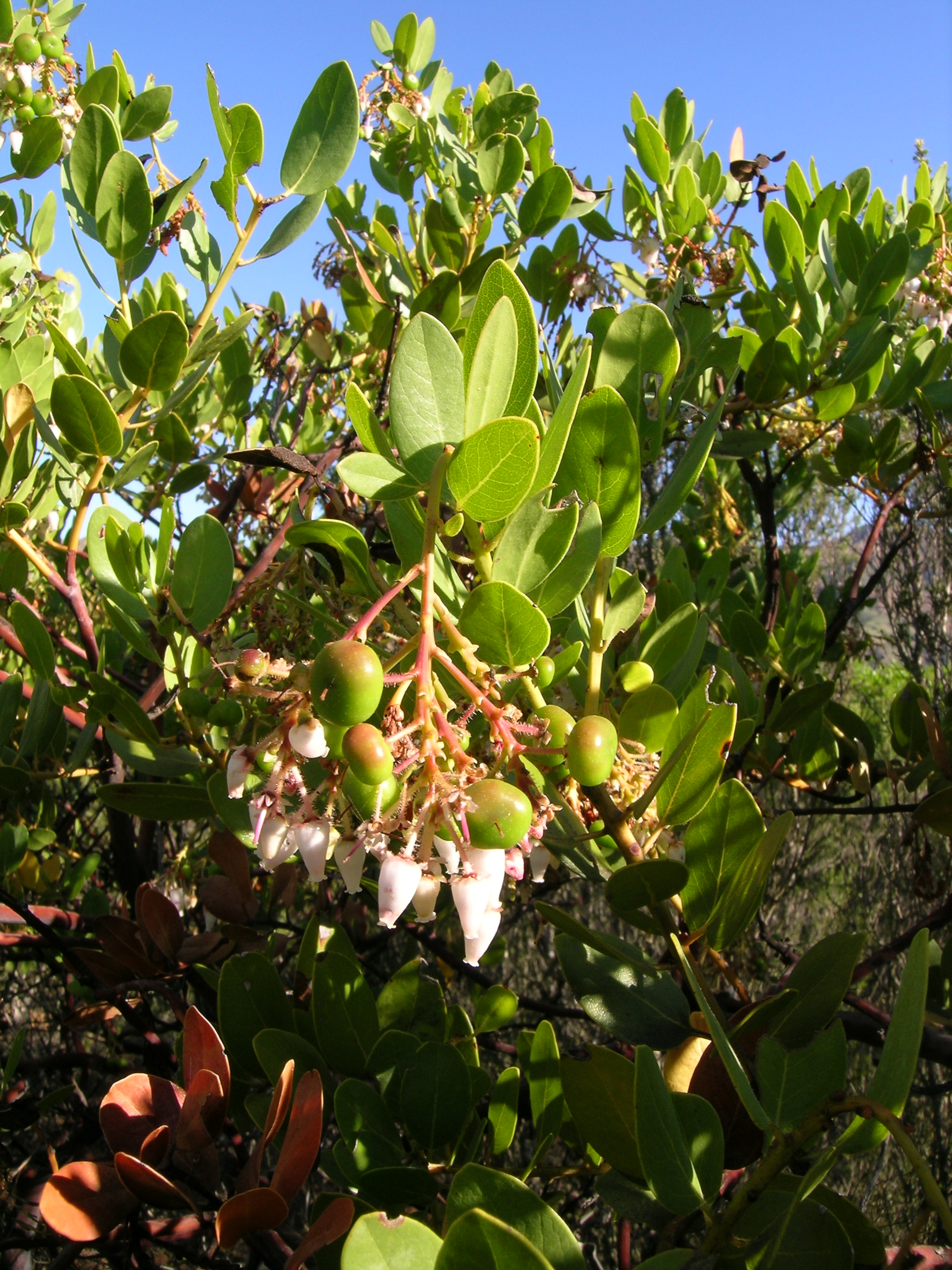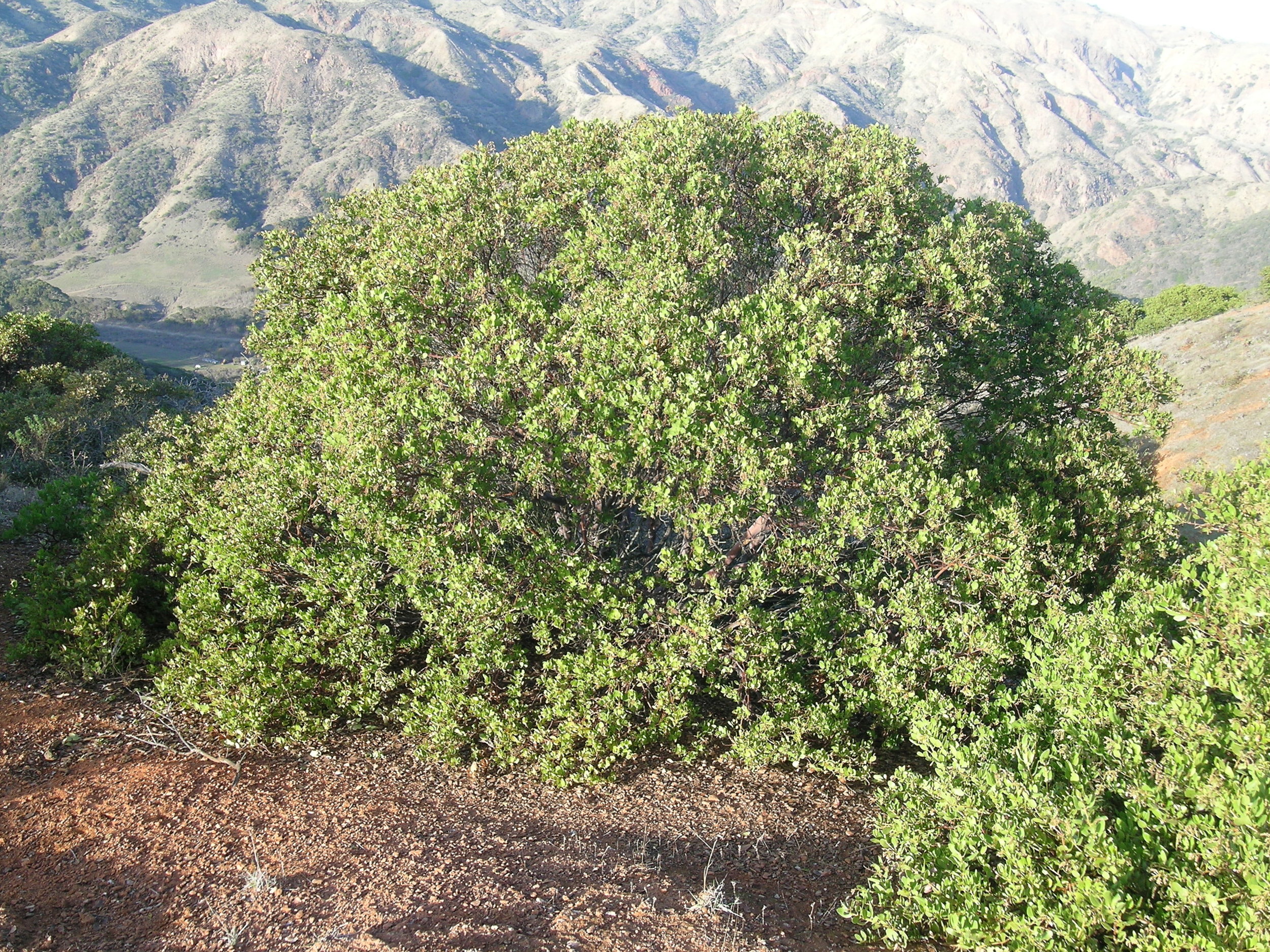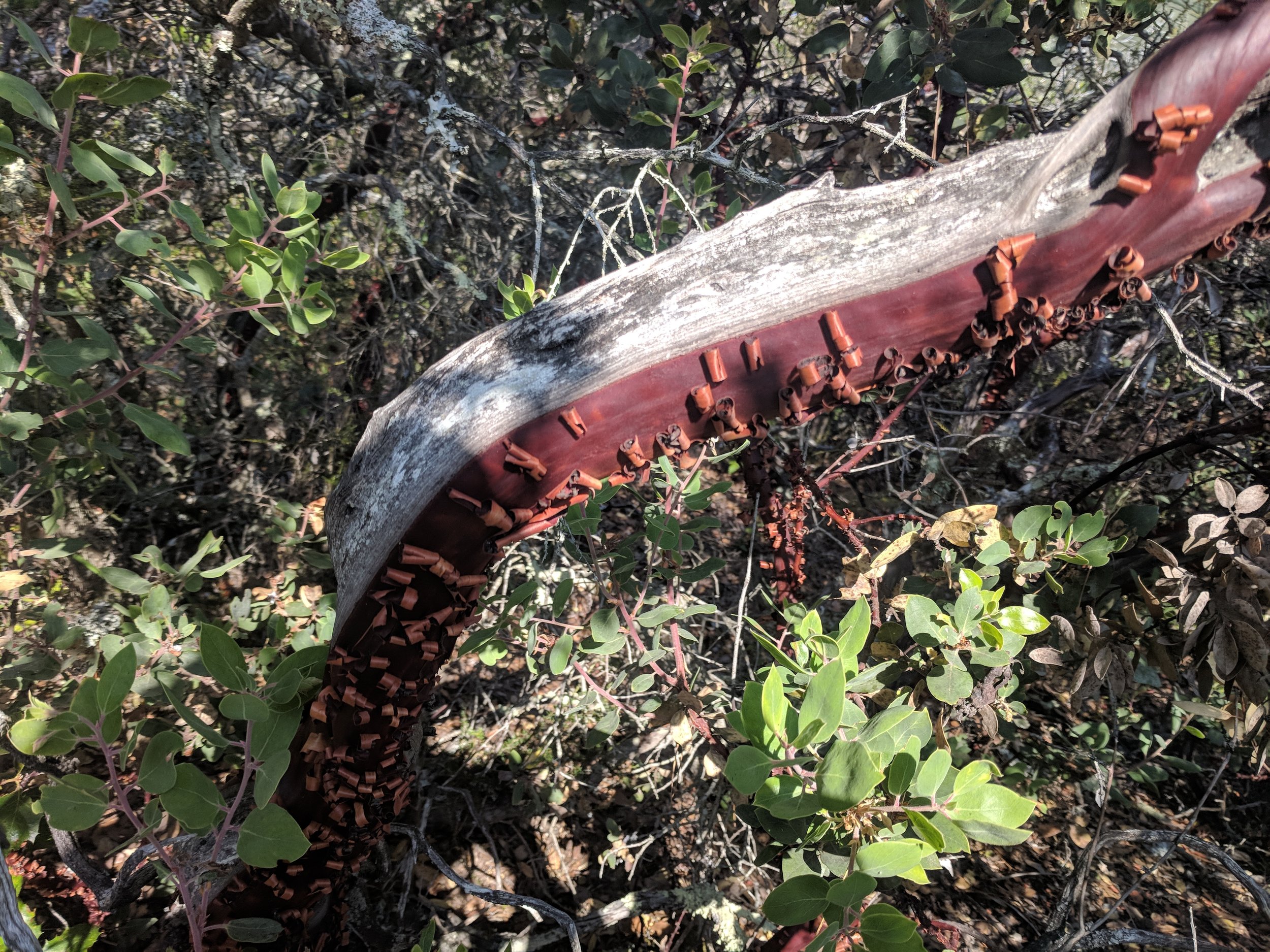The manzanita (Arctostaphylos spp.), a plant most distinguishable by its smooth, twisted red bark, is a key component to California’s beautiful chaparral environment. There are over 40 species of manzanita in the genus Arctostaphylos. They are found in parts of Oregon and Washington and as far south as Mexico. However, they are most common in California.
Although species grow in all shapes and sizes, the manzanita maintains some predominant features like its oval grey-green leaves and red berries that bloom into small light pink flowers. Their height varies from one to two inches to 20 feet tall. Around San Luis Obispo, Arroyo de la Cruz Manzanitas (Arctostaphylos cruzensis) are seen scattered about coastal areas. They are only two to three inches tall and six inches wide. On the other hand, Big Berry Manzanitas (Arctostaphylos glauca) grow to be around 15 feet tall. These are found in drier areas of California, typically further away from the coast.
Lots of manzanitas are drought tolerant. Arctostaphylos Sunset Manzanita and Arctostaphylos Pacific Mist are some examples. Most manzanitas flourish in a Mediterranean climate: a dry, hot summer and cold, somewhat rainy winter.
The berries are ripe in the summer and fall. Typically coyotes, foxes, and a variety of birds eat the fruit.
These animals are also responsible for the dispersion of the seeds. Hummingbirds especially love the manzanita due to their urn-shaped flower that is rich with nectar.
The name, “manzanita” comes from the Spanish word for little apple. The edible berries not only look like apples but taste like apples too. The Chumash people enjoyed the manzanita berries in a coarse winter meal. Today it is more common to see them in a cider. One can make a delicious cider by picking the berries while they are just beginning to turn red.




